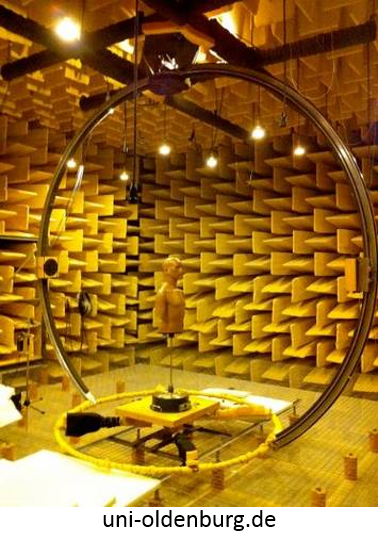Graduate Student: Matthew Neal
In room acoustics research and in the design of concert halls, modeling program such as Odoen, CATT Acoustic, and EASE are often used to create auralizations, or aural renderings of what a particular room will sound like to a listener. The most common and accessible method to present auralizations to a client or musician is by using binaural techniques. To render the sound field of a particular room into a headphone-based auralization, a head related transfer function (HRTF) is required. A head-related transfer function is a database of impulse responses, measured in both the left and right ears, of a sound source positioned at all directions around a listener. Using this database of measurements, simulated sound fields can be processed into headphone based auralizations.

Typically, an average HRTF, often of a binaural mannequin, is used by simulation program to create auralizations, because it is difficult to measure every individual’s for personalized auralization. Although it has been shown that miss-matched HRTFs lead to a decreased localization ability of individuals, little work has been done to look at the subjective effects of listening to a sound field or room auralization using a miss-matched HRTF. For this study, concert hall auralizations were created in Odeon using nine different HRTF from the CIPIC HRTF database. One of the HRTFs was of the KEMAR binaural manequin, which is the default ‘average’ HRTF used by Odeon. The other eight were identified using k-means clustering of the the entire CIPIC database of 45 subjects, to identify eight representative individuals for the entire database.

For the study, listeners first participated in a specialized subjective listening test, which determined a best and a worst HRTF for each subject. Then, subjects listened to six different concert hall auralizations created using their best, worst, and the average HRTF, and rated their perception of reverberance, listener envelopment, and overall preference.
Project Publications:
- Neal, M. and Vigeant, M.C. (2014). “Use of k-means clustering analysis to select representative head related transfer functions for use in subjective studies (A).” J. Acoust. Soc. Am. 135:2366 [Best Student Paper Award]
- Neal, M. and Vigeant, M.C. (2013). “The effect of using matched, but not individualized, head related transfer functions on the subjective evaluation of auralizations (A).” J. Acoust. Soc. Am., 134: 3970